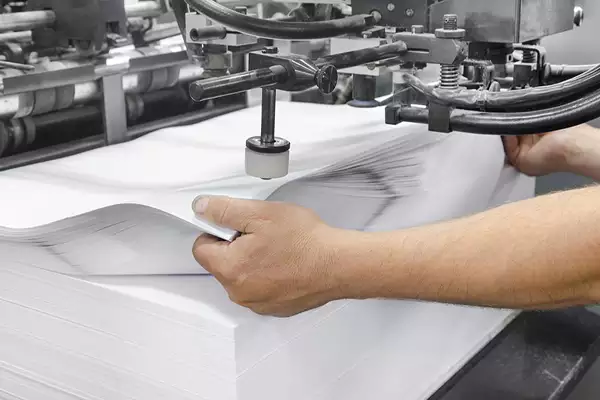How to comply with local regulations for RTO in the printing industry?
Introdução
The printing industry is subject to various local regulations, especially concerning environmental concerns and emissions. One essential aspect of compliance in this sector is the implementation of Regenerative Thermal Oxidizers (RTOs). This article will explore how printing companies can adhere to local regulations by utilizing RTOs effectively.
Understanding RTOs in the Printing Industry
RTOs, also known as regenerative oxidizers, are pollution control devices used in the printing industry to treat volatile organic compounds (VOCs) and hazardous air pollutants (HAPs) emitted during the printing process. These devices help eliminate harmful emissions and ensure compliance with local regulations.
The Working Principle of RTOs
RTOs operate by directing the polluted air into combustion chambers where it is heated to a high temperature. The VOCs and HAPs are oxidized, effectively breaking them down into harmless byproducts such as carbon dioxide and water vapor. The heat generated during this process is then transferred to a heat recovery system, which preheats the incoming polluted air. This energy-efficient process helps minimize operating costs.
The Importance of RTOs in Compliance
Local regulations often set strict limits on emissions from the printing industry, aiming to protect the environment and public health. RTOs play a crucial role in ensuring compliance with these regulations by effectively reducing VOCs and HAPs. Implementing RTOs not only helps printing companies avoid penalties but also promotes a cleaner and safer working environment.
Key Considerations for RTO Implementation
When planning to comply with local regulations using RTOs, printing companies should consider the following aspects:
- 1. Understanding the Local Regulatory Requirements
- 2. Assessing the Emission Sources and Volumes
- 3. Selecting the Appropriate RTO Technology
- 4. Designing an Efficient System
- 5. Ongoing Monitoring and Maintenance
Each region may have specific regulations and emission limits for the printing industry. It is crucial for printing companies to thoroughly understand these requirements to ensure proper compliance. Consulting with environmental experts or regulatory agencies can provide valuable guidance in this area.
Identifying the emission sources and quantifying the volume of pollutants is essential for determining the size and capacity of the RTO system needed. Conducting an emission inventory and monitoring emissions regularly can provide accurate data for this assessment.
Various types of RTO technologies are available, and choosing the right one depends on factors such as the type and concentration of pollutants, process conditions, and energy efficiency requirements. Working with experienced RTO suppliers can help printing companies make informed decisions.
The design of the RTO system should consider factors such as heat recovery, air volume control, and maintenance accessibility. Optimizing the system’s efficiency ensures effective pollutant destruction and minimizes energy consumption.
Regular monitoring of the RTO system’s performance, including temperature, pressure, and emission levels, is essential for maintaining compliance. Scheduled maintenance and prompt repairs should be conducted to ensure optimal functioning.
Conclusão
Complying with local regulations in the printing industry requires a comprehensive approach that includes the utilization of RTOs. By understanding the working principle of RTOs, considering key implementation factors, and ensuring ongoing monitoring and maintenance, printing companies can effectively reduce emissions and meet the required environmental standards. Implementing RTOs not only demonstrates commitment to compliance but also contributes to a more sustainable and environmentally friendly printing industry.


Introduction of Our Company
We are a high-tech enterprise specializing in the comprehensive treatment of volatile organic compounds (VOCs) waste gas and carbon reduction and energy-saving technology equipment manufacturing. Our core technologies include thermal energy, combustion, sealing, and automatic control, with the ability to simulate temperature fields and air flow fields. We also have the ability to test the performance of ceramic heat storage materials, compare the performance of zeolite molecular sieve adsorbents, and test the characteristics of high-temperature incineration and oxidation of VOCs organic compounds. We have a RTO technology R&D center and exhaust gas carbon reduction engineering technology center in Xi’an, as well as a 30,000 square meter production base in Yangling. We are a leading manufacturer of RTO equipment and zeolite molecular sieves rotary equipment with a core technology team from the Aerospace Liquid Rocket Engine Research Institute (Aerospace Sixth Institute).

Certificações, Patentes e Honrarias
Our company has obtained certifications and qualifications such as the Intellectual Property Management System Certification, Quality Management System Certification, Environmental Management System Certification, Construction Enterprise Qualification, High-tech Enterprise, and patents for the Rotary Valve Type Heat Storage Oxidation Furnace, Rotary Wing Heat Storage Incineration Equipment, and Disc Zeolite Rotary Equipment. We have also received various honors.

Como escolher o equipamento RTO certo
- Determinar as características do gás residual
- Understand the emission standards set by local regulations
- Avaliar a eficiência energética
- Considere a operação e a manutenção
- Análise de orçamento e custos
- Choose the appropriate RTO type
- Considere fatores ambientais e de segurança
- Teste e verificação de desempenho
When choosing RTO equipment, it is important to carefully consider each of these factors to ensure that the equipment meets the specific needs of the operation.
Nosso Processo de Serviço
- Consulta preliminar, inspeção no local e análise de demanda
- Projeto de esquema, simulação e revisão de esquema
- Custom production, quality control, and factory testing
- Serviços de instalação, comissionamento e treinamento no local
- Manutenção regular, suporte técnico e fornecimento de peças de reposição
We provide one-stop solutions and have a professional team to tailor RTO solutions for customers.
Autor: Miya
